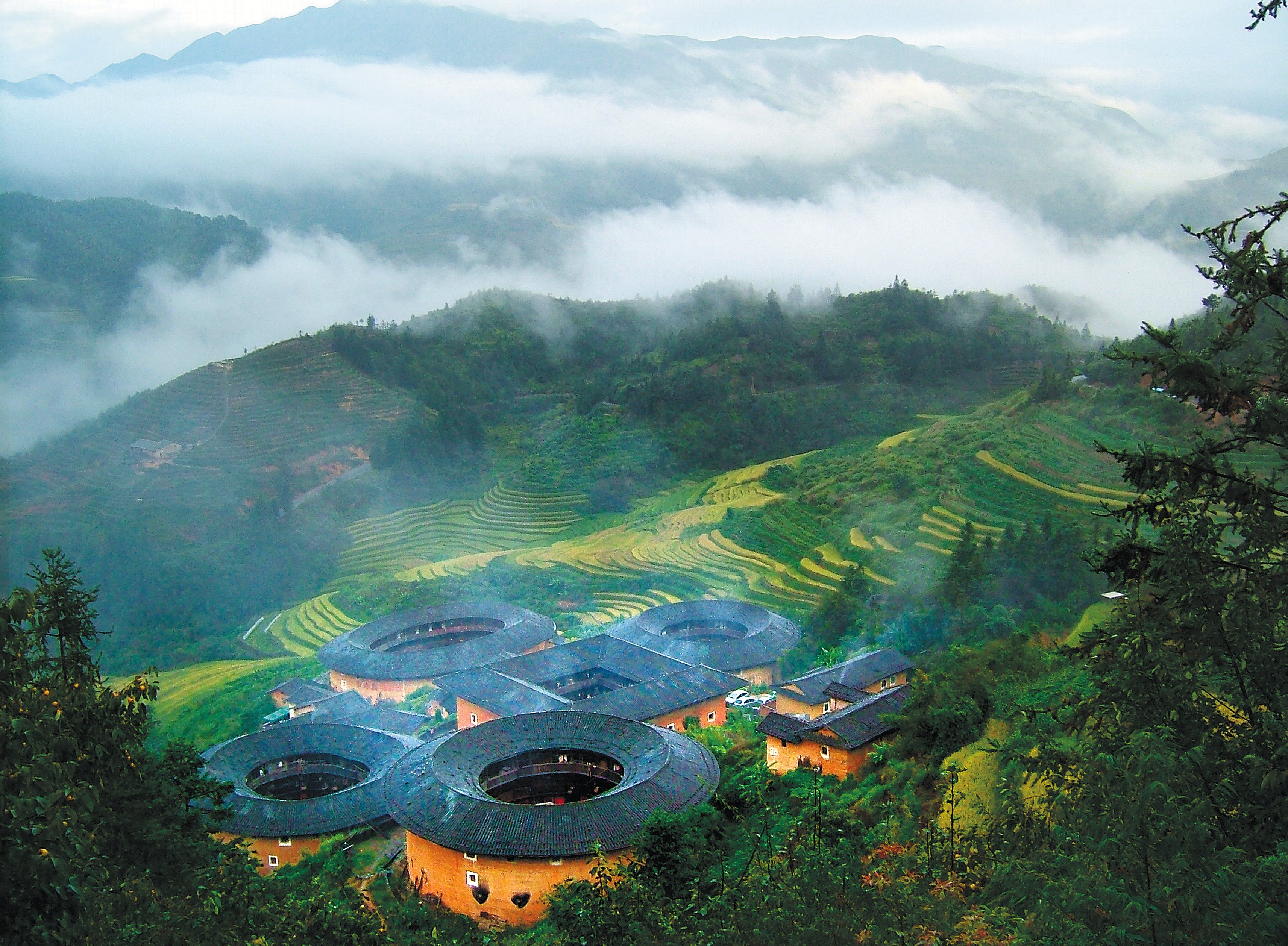A legacy that builds on home comforts
THE ARTICLES ON THESE PAGES ARE PRODUCED BY CHINA DAILY, WHICH TAKES SOLE RESPONSIBILITY FOR THE CONTENTS

Amid idyllic surroundings featuring cobblestone paths, deep ruts left by ox carts, lush farmland and a clear gushing river, a group of historical buildings stand out like jewels in the crown at Yunshuiyao ancient town.
Known as tulou, or earthen buildings, those circular and rectangular buildings are mostly set among rice, tea and tobacco fields and some can house up to 800 people.
Built around a central open courtyard with only one entrance and windows to the outside only above the first floor, these earthen buildings feature faded yellow clay walls and dark-brown timber roofs that look out of this world, yet have a strange way of blending in with their surroundings. They provide visitors with breathtaking views and a sense of peace and quiet.
“We’ve seen an increasing number of visitors, most of whom have had their curiosity piqued by tulou,” said Zhang Mintai, who grew up in a local tulou neighbourhood and has witnessed the rising popularity of the town in Nanjing county, Zhangzhou city of Fujian province.
Scattered across the province’s mountainous regions, tulou first emerged in the 12th century. They were built by the Hakka, whose name literally means “guest people”. Those early builders were mostly migrants who originated from lands adjoining the Yellow River and moved to southern China. Population pressure gave rise to conflict between the Hakka and their neighbours, so they built their homes to double as fortifications.
Built amid steep terrain, and with a relatively sparse population, tulou enabled their residents to live together, protected from wild animals and rampaging bandits.
To date, there are more than 15,000 tulou buildings in Nanjing county, and more than 23,000 in the Yongding district of Longyan city.
Those buildings became better known after 46 of them were given World Heritage status by Unesco in 2008. Unesco says on its website that “they are exceptional examples of a building of tradition and function, exemplifying a particular type of communal living and defensive organisation, and, in terms of their harmonious relationship with their environment, an outstanding example of human settlement”.
Zhang said: “A major charm of tulou lies in them being made of rammed earth and wood, yet being able to stand the test of time, lasting for more than 1,000 years.”
Jian Rongwei, former curator of the Nanjing county museum, has been studying the construction techniques of Hakka earthen buildings for years, and believes the essence of the craftsmanship lies in “the extreme height-to-thickness ratio achieved in their walls”.
The ratio found in more than 1,300 large tulou in Nanjing generally reaches 10 to 1, as opposed to 3 to 1 in other traditional rammed earth constructions.
“The thickness of the wall base has been reduced by 9.8 feet [than conventional buildings], gradually decreasing as it rises while slightly sloping inward to form a trapezoidal shape with a strong inward force,” Jian said. “It results in excellent seismic resistance.”
Moreover, the ancient wisdom of the Hakka managed to overcome challenges, ranging from hardening the loose raw earth, to keeping it resistant against rainwater.
“It takes far more work than just compacting the soil with the ramming tools, which were made of a few wooden boards and sticks,” Jian said. “In fact, it involves careful consideration of such aspects as selecting and proportioning raw soil, human labour input, the addition of pinewood, ramming techniques, weather conditions, and the construction period.”
Take the Huaiyuan Lou in the county as an example. The four-storey, 47.6-feet-high tulou on the Unesco list had dozens of people spend more than four years mixing soil, setting up tools, doing measurements, ramming the earth, laying pinewood, and patting the walls.
“Everyone had clear responsibilities, and each step was well-organised. To ensure the solidification and drying of the walls, they would pause construction for a year after completing each layer of ramming,” Jian said.
Subscribe to Independent Premium to bookmark this article
Want to bookmark your favourite articles and stories to read or reference later? Start your Independent Premium subscription today.